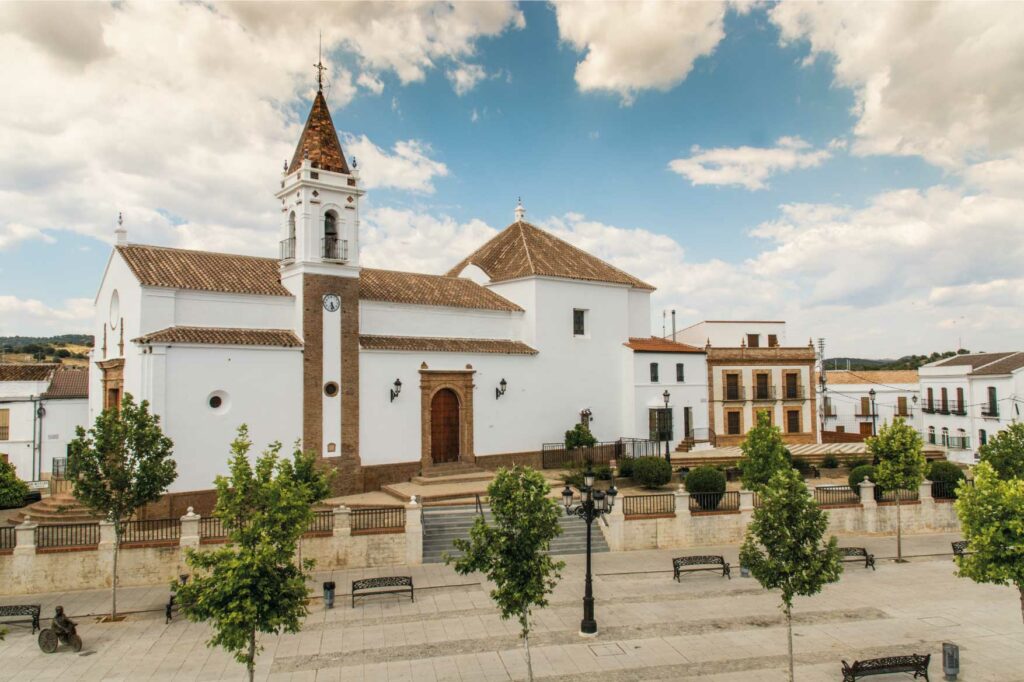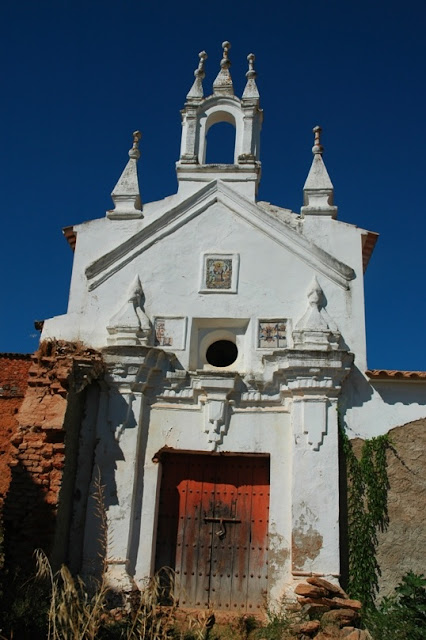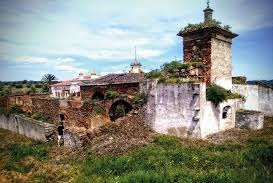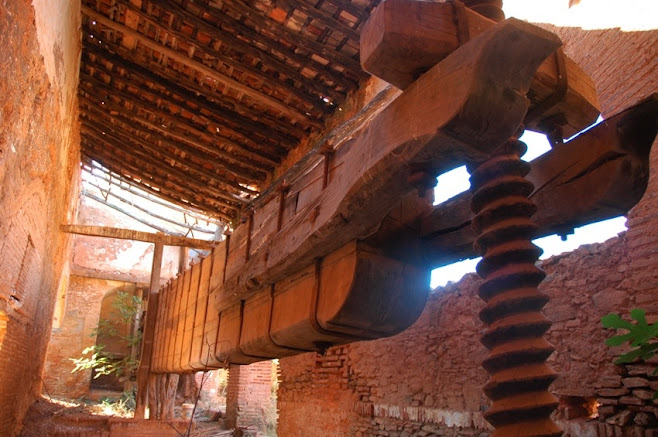Get to know Las Navas de la Concepción
HISTORY
In the municipality of Las Navas de la Concepción, burial sites have been found with grave goods and remains of ceramic objects, which some experts have placed in the Muslim period, as well as the ruins of a possible castle or watchtower from the same period. There is nothing scientifically or historically proven of this, although the plan of the possible castle is preserved on the “La Armada” estate, some 8 Kms. from the town.


The earliest known records date back to the 16th century, specifically to 1557, when the monks of the Order of Saint Basil established themselves in the area. Following the custom of the time and in accordance with their rules, they set up various foundations in rugged areas of the Sierra Morena, more than 25 kilometres away from any urban population.
In this area and at the aforementioned date, four monasteries were built by the now reformed Order of St. Basil, under the names of:
- San Antonio del Valle de Galleguillos.
- San Miguel de las Breñas.
- San Basilio de Hornachuelos.
- Nuestra Señora del Buen Suceso de Retamar.
The ruins of the first are preserved about two kilometres from this town, and of the others, there are remains in the towns of Alanís, Hornachuelos and La Puebla de los Infantes, all of which are adjacent to this one.
Together, the four monasteries covered an area of approximately twenty thousand hectares, constituting the Ecclesiastical Province of “El Tardón”, which in geographical and cadastral terms belonged to the provinces of Seville and Cordoba.
Of these, the most important, both in terms of the richness of its soil and its surface area, was that of “San Antonio del Valle de Galleguillos”, which included the present-day pastures of “El Convento”, “La Carlina”, “Galleguillos”, “La Arana”, “El Lagar”, “El Buho”, “La Venta” and “Juncalón”.
The earliest known records date back to the 16th century, specifically to 1557, when the monks of the Order of Saint Basil established themselves in the area. Following the custom of the time and in accordance with their rules, they set up various foundations in rugged areas of the Sierra Morena, more than 25 kilometres away from any urban population.
In this area and at the aforementioned date, four monasteries were built by the now reformed Order of St. Basil, under the names of:
– San Antonio del Valle de Galleguillos
– San Miguel de las Breñas
– San Basilio de Hornachuelos, and
– Nuestra Señora del Buen Suceso de Retamar.
The ruins of the first are preserved about two kilometres from this town, and of the others, there are remains in the towns of Alanís, Hornachuelos and La Puebla de los Infantes, all of which are adjacent to this one.
Together, the four monasteries covered an area of approximately twenty thousand hectares, constituting the Ecclesiastical Province of “El Tardón”, which in geographical and cadastral terms belonged to the provinces of Seville and Cordoba.
Of these, the most important, both in terms of the richness of its soil and its surface area, was that of “San Antonio del Valle de Galleguillos”, which included the present-day pastures of “El Convento”, “La Carlina”, “Galleguillos”, “La Arana”, “El Lagar”, “El Buho”, “La Venta” and “Juncalón”.
The monks of the aforementioned Order, in order to meet their needs, encourage vocations and create new monasteries, exploited their lands, hiring labourers and livestock farmers and building a small village, thus giving rise to the first settlements in the locality. The first buildings were erected in the small “navas” or undulations existing to the southwest within its territory, building the streets of Portugalete and Bilbao, following those of Serrano, León XIII and its Barreduela. As time went by, new constructions were built on the so-called hill of Nica and in the Castle, and in view of the rapid growth, the current town with its forty-two streets, well aligned and oriented to the East and South, became known as “Nava de las Puercas”, the name of the site of a vacant estate, belonging to the nearby town of Constantina, where since ancient times a large number of breeding sows were raised, an activity that the Monks continued, constituting one of their greatest sources of wealth.
The monks of the aforementioned Order, in order to meet their needs, encourage vocations and create new monasteries, exploited their lands, hiring labourers and livestock farmers and building a small village, thus giving rise to the first settlements in the locality. The first buildings were erected in the small “navas” or undulations existing to the southwest within its territory, building the streets of Portugalete and Bilbao, following those of Serrano, León XIII and its Barreduela. As time went by, new constructions were built on the so-called hill of Nica and in the Castle, and in view of the rapid growth, the current town with its forty-two streets, well aligned and oriented to the East and South, became known as “Nava de las Puercas”, the name of the site of a vacant estate, belonging to the nearby town of Constantina, where since ancient times a large number of breeding sows were raised, an activity that the Monks continued, constituting one of their greatest sources of wealth.
“El Lagar” is undoubtedly the oldest existing building in the village. Its construction dates back to the 16th century and was carried out by the monks. It is an old oil, wine and grain mill, where the cellars still remain with their large buried jars, as well as a large wooden beam, 16 metres long and 1.5 metres high, which was responsible for crushing the product. The small, ancient hermitage dedicated to the Virgin of Belén, next to the mill, where the pilgrimage in honour of the Virgin was held until the end of the 19th century, is also still standing.


It has not been possible to find the date on which the original name of the village was changed to Las Navas de la Concepción, although, as a point of reference, we can indicate the year 1760, the date on which the construction of the Parish Church consecrated to the Immaculate Conception began.
With this building, the dependence on the church of Constantina, a municipality on which it also depended administratively until 1854, the year in which Queen Isabel II, at the request of the neighbourhood, and fulfilling all the requirements demanded by law, issued a Royal Order authorising the village of Las Navas to constitute itself as an independent Town Council.
